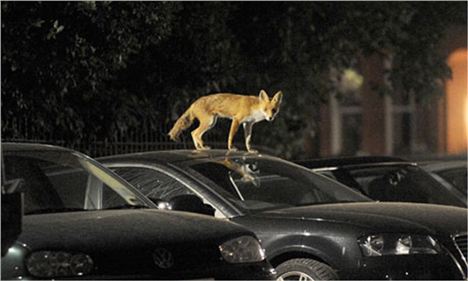THE tally ho-ing of the hunt-masters has been largely silenced since the Labour Government banned fox hunting.
But now Mr Fox and his scouse friends face a new threat from townies unhappy that the bushy-tailed animals are migrating in ever increasing numbers to Liverpool's built-up areas.
On Wednesday the activities of the urban fox population will come under the spotlight at a meeting of Liverpool City Council.
It seems chickens and family pets have been savaged by foxes inhabiting many areas of the city, particularly the leafy suburbs of south Liverpool, and now there are worries that the foxes will set their sights on babies and young children too.
No specific remedy has been put forward to tackle the “problem” but Lib Dem Group Leader Richard Kemp has promised it won’t herald the creation of a South Liverpool Hunt.
Cllr Kemp’s wife Erica Kemp and Church Ward colleague Pat Maloney are generating Wednesday’s debate.
Cllr Richard Kemp said: "I don’t know what the solution is to what is a growing problem in the city. We will see what comes forward."
The councillors want Mayor Joe Anderson and his council cabinet to probe the problem and come back with a report in three months.
Their motion states: “Urban foxes are an increasing problem throughout Liverpool, not only by killing smaller animals and birds but also given their increasing brazenness the potential threat to babies and young children.”
A decade ago on my own night-time strolls in South Liverpool it was rare to spot even a single fox. Now it is not uncommon to see three or four during a 60-minute constitutional and some people put out food for the nocturnal visitors to their back gardens.
There are an estimated 33,000 urban foxes in the UK, and around 258,000 in total. The fox is by far the most common and widely spread carnivore around. Despite the fact they no longer appear fazed by our presence, there have been very few cases reported of foxes attacking humans.
Just a few years ago there was a state of near paranoia when it was claimed a fox entered a house in the south of England and attacked a young child as it slept.
Yet wildlife expert, John Bryant, maintains that foxes are among “the least aggressive animals you could share your environment with”.
On one late night walk three family cats could be seen in a front garden happily nibbling away at a late night snack, and just a few feet away a friendly fox tucking into a bowl of food.
Richard Kemp says a constituent in the Calderstones area told how eight chickens had been massacred in one night by a fox.
Keeping a watchful eye on the growing population of urban foxes is the Mammal Group at the University of Bristol.
It poses the question: Can fox numbers be reduced?, saying that in order to keep numbers down a staggering 70pc would have to be killed annually, over many successive years.
Attempts in some urban areas to control fox numbers have proved unsuccessful. This is partly due to their popularity. In a recent survey by The Mammal Society foxes were voted one of the favourite British mammals. Relocating them back to the countryside has also failed - they generally find their way back to the city or cannot survive in a rural environment.
Though there are some conflicts. Foxes can be a nuisance to gardeners and allotment owners because of fouling, digging or damaging garden plants. However most problems can be easily solved by following simple advice from the website.
The risks of people being attacked by a fox are negligible compared to the risks of being attacked by a domestic dog or cat.
Foxy file
· Foxes and cats generally ignore each other.
· Male foxes weigh 15 pounds and females 12.5 pounds. Their fur coat makes them look bigger. A German Shepherd weighs six times as much as a fox.
· In captivity foxes can reach an age of 14. In the wild only a quarter reach two years. Just over one in 20 celebrate their fourth birthdays.
· Young foxes tend to follow their mums to learn how to seek food.
· Younger foxes are sought after by hungry badgers.
· Foxes don’t kill for pleasure. If they catch too much food they bury it for later.
· Screaming noises at night are most likely to be foxes communicating, rather than a pet cat caught up in a skirmish with a fox.
· Foxes don’t attack dogs or cats – they are more likely to be afraid of family pets
· Foxes don’t hunt in packs. They are lone hunters, though after their hunting expeditions they sometimes meet up socially (that's enough, ed).















